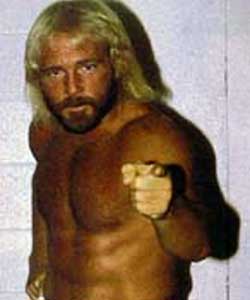Because Hispanic roots are considered aligned with a European ancestry (Spain/Portugal), Hispanic/Latino ancestry is outlined solely as an ethnic designation (much like being Norse or Germanic). In Spanish, the term “hispano” as in “hispanoamericano”, refers to the people of Spanish origin who live within the Americas; it additionally refers to a relationship to Hispania or to the Spanish language. There are individuals in Hispanic America that are not of Spanish origin, as the original individuals of those areas are Amerindians. Researchers right now doubt Las Casas’ figures for the pre-contact levels of the Taíno population, contemplating them an exaggeration.
The descendants of the original French settlers have distinguished themselves as enterprise folks, politicians and writers. “La Casa del Francés” (The Frenchman’s House), in-built puerto rican girls 1910, is a turn-of-the-century plantation mansion just lately designated as a historic landmark by the National Register of Historic Places.

Religious breakdown in Puerto Rico (as of 2006) is given within the table on the right. A study of a pattern of 96 healthy self-recognized White Puerto Ricans and self-recognized Black Puerto Ricans in the U.S. confirmed that, although all carried a contribution from all three ancestral populations (European, African, and Amerindian), the proportions showed significant variation. Depending on individuals, though typically correlating with their self-identified race, African ancestry ranged from less than 10% to over 50%, whereas European ancestry ranged from underneath 20% to over 80%. Amerindian ancestry confirmed less fluctuation, usually hovering between 5% and 20% regardless of self-recognized race. During the early 20th century Jews started to settle in Puerto Rico.
The French who immigrated to Puerto Rico rapidly turned part of the Island immigrant communities, which were predominantly Catholic additionally. They had been instrumental in the development of Puerto Rico’s tobacco, cotton and sugar industries and distinguished themselves as business individuals, merchants, tradesmen, politicians and writers. Text of Law #283 of 2011, ordering the 2012 Political Status plebiscite, and which provides a fairly complete picture of the occasions associated to Puerto Rico’s political standing that have taken place since the 1898 U.S. annexation of the island. In a 2016 Economist/YouGov poll, 29% supported statehood, 25% believed Puerto retain its present standing, 20% believed it should be an unbiased nation, and 26% weren’t positive.
Because there were nearly 500,000 blank ballots, creating confusion as to the voters’ true need, Congress decided to ignore the vote. The 2014 finances invoice included $2.5 million in funding for a future vote on Puerto Rico’s political status. Puerto Rico’s present political standing limits to the autonomy of the Puerto Rican authorities. For example, the Island’s authorities just isn’t totally autonomous, and a level of federal presence within the Island is commonplace, together with a department of the United States Federal District Court. The standing of the island is the result of various political actions within both the United States and Puerto Rican governments.
Some cities in the U.S. were founded by Spanish settlers as early as the sixteenth century, prior to the creation of the Thirteen Colonies. For instance, San Miguel de Gualdape, Pensacola and St. Augustine, Florida have been founded in 1526, 1559 and 1565 respectively.

Stateside Puerto Ricans and standing
According to the 2010 US census, of the stateside Puerto Rican inhabitants, about fifty three.1% self-recognized as white, about 8.7% self-identified as black, about 0.9% as American Indian, about 0.5% as Asian, and 36.7% as blended or other. Though over half self-identified as white, the Puerto Rican population is largely made up of multi-racials, most Puerto Ricans are mixed to varying levels, often of white European/North African, black West African, and indigenous Taino ancestry.
Demographics of Stateside Puerto Ricans
Despite newer migration developments, New York City continues to be house by a major margin to the largest demographic and cultural heart for Puerto Ricans within the United States, with Philadelphia having the second-largest group. The portmanteau “Nuyorican” refers to Puerto Ricans and their descendants within the New York City metropolitan area. A large portion of the Puerto Rican population in the United States resides in the Northeastern United States and Florida, with Holyoke, Massachusetts and Buenaventura Lakes, Florida having the highest percentages of Puerto Rican residents of any municipalities within the country.
These embrace protests, marketing campaign contributions and lobbying, and voting. Compared to the United States, voter participation by Puerto Ricans in Puerto Rico is very massive.[quotation wanted] However, many see a paradox in that this excessive degree of voting isn’t echoed stateside. There, Puerto Ricans have had persistently low voter registration and turnout rates, regardless of the relative success they have had in electing their own to significant public places of work all through the United States. Census figures, the Puerto Rican population has one of many highest poverty and incarceration rates amongst all ethnic teams in the United States.

Federal voting rights in Puerto Rico
Historically, Puerto Ricans were the most important Hispanic/Latino group within the New York metropolitan space, nonetheless the Puerto Rican inhabitants in the area began to decrease as a result of rising price of dwelling and in turn the overall Hispanic/Latino inhabitants began to diversify with will increase in other Latino groups. Hispanic/Latino populations within the Northeast Ohio and Western New York areas particularly, are typically 80-90% Puerto Rican. However, Central Florida and Southwestern New England, which is Connecticut and western Massachusetts, have the highest concentrations of Puerto Ricans by proportion of the entire populations of these areas as a complete. In 1950, a couple of quarter of 1,000,000 Puerto Rican natives lived “stateside”, or in one of many U.S. states. That is, slightly less than a 3rd of the 5 million Puerto Ricans dwelling stateside had been born on the island.
Population (1765–
This article is about folks of Spanish-speaking cultures normally. For descendants of early Spanish and Mexican settlers in the United States, see Hispanos.
